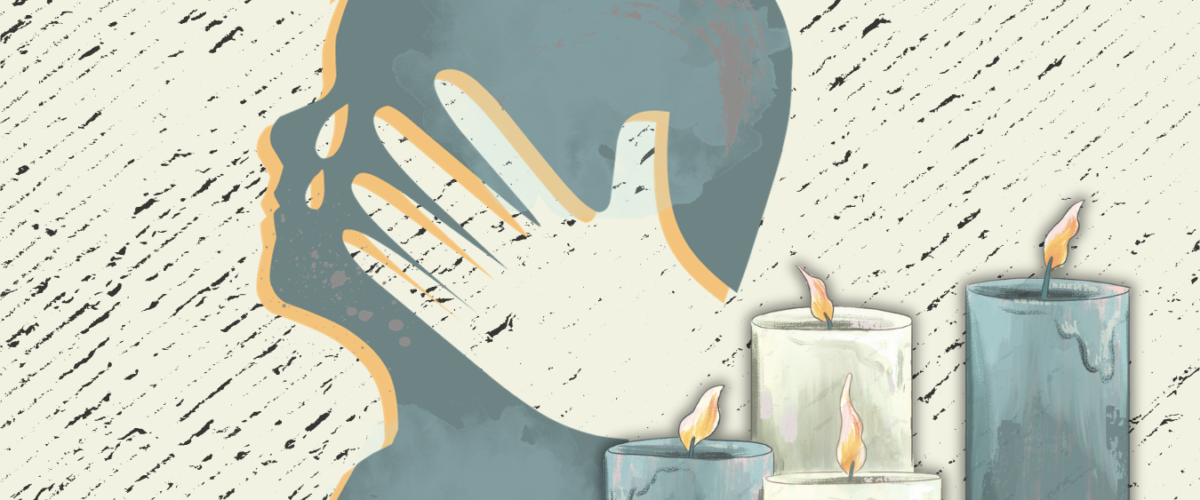This series analyses the changes proposed by the Criminal Law Bills in 2023. This article was first published as part of Project 39A’s Bharatiya Nyaya Sanhita Bill, 2023: A Substantive Analysis, a complete version of which can be accessed here.
This post analyses the constitutive elements of the sexual offences framework envisaged by the Bill and highlights issues that emerge.
Clauses 63, 64, 70, 73, 74, 75, 76, 77, 78: Sexual Offences
While the substance of the provisions dealing with sexual offences under the BNS, are largely similar to the IPC, a few changes have been proposed.[1] The Bill introduces a new chapter titled ‘Offences Against Women and Children’ to deal with sexual offences. Similar offences under the IPC are part of the chapter on ‘Offences Affecting the Human Body’.[2] The implication of such restructuring is that the BNS does not recognise sexual offences unless they are committed against a woman.[3] The BNS does not provide for a separate offence to cover rape of men and transgenders. Additionally, the Bill proposes minor changes to provisions relating to rape of women under the age of 18. It renumbers existing rape provisions and attempts to harmonise the treatment of gang rape of minor women with the POCSO.
I. Gendered provisions
‘Rape’ even in the IPC, is a gendered provision – where the offender can only be a man and the victim, a woman.[4] The only provision across statutes[5] which penalises rape of an adult man is s. 377,[6] which does not find a place in the BNS.[7] It follows that BNS fails to penalise sexual violence against men.
The BNS categorises gender into three classes – man, woman, and transgender.[8] Transgender here includes a transwoman irrespective of whether they have gone through sex reassignment surgery etc, and any person who self identifies as a woman but the gender assigned at their birth is not female. This category of persons is excluded from the purview of ‘woman’ and hence sexual assault against them is not recognised as rape.[9] As there is no provision similar to s. 377, IPC in the BNS, the Bill also does not penalise sexual assault committed on a transgender person.[10] Similar to the IPC, sexual assault committed by anyone other than a man, including a transgender or transman, is not an offence under the BNS.[11]
Notably, the statement of objects and reasons of the BNS mentions that ‘various offences have been made gender neutral.’ However, this does not apply to the offence of rape. In fact, only two provisions under the category of ‘criminal force and assault against woman’ have been made gender neutral.[12] The victim in all these offences (as evident from the categorisation) remains a woman, but the proposed offences of assault or use of criminal force with the intent to disrobe (Cl. 75, BNS) and voyeurism (Cl. 76, BNS) are to be penalised irrespective of whether committed by a man or a woman.[13] Inexplicably, sexual harassment (Cl. 74, BNS) and stalking (Cl. 77 BNS) continue to be an offence only when committed by a man. The Justice JS Verma Committee constituted to propose amendments to the rape law in the aftermath of the gang rape and murder of a young woman in New Delhi in December 2012 recommended making these offices (disrobing, voyeurism, and stalking) gender neutral.[14] The 2013 amendments to the IPC defined these offences only when committed by a man and the proposed provisions of the BNS retain that approach.
II. Range of punishments
The Bill borrows age-based classification of rape victims from the IPC and POCSO[15], and prescribes different sentencing options for the rape of minors under the ages of 18,[16] 16,[17] and 12[18] respectively. The range of punishments for rape of minors of different ages is largely the same across the IPC, POCSO, and the BNS.
In Cl. 4(b), the BNS proposes that a sentence of life imprisonment should be read as a sentence of ‘life imprisonment until the remainder of one’s natural life’ (‘whole life sentence’).[19] This does away with separate punishments for rape and aggravated rape. Cl. 64(1) punishes rape simpliciter with ten years to life imprisonment whereas Cl. 64(2) punishes aggravated forms of rape with ten years to life imprisonment for the remainder of a person’s natural life. If life imprisonment must always mean the remainder of one’s natural life under Cl. 4, the punishments are identical and the legislative intention behind providing a separate aggravated offence is frustrated.[20]
III. Gang rape of women under the age of 18
Cl. 70(2) introduces a new offence of gang rape of a woman under 18 years of age, proposing two changes worth noting. First, Cl. 70(2) merges s. 376DA and s. 376DB, IPC and removes age-based qualifiers to consider gang rape of a minor woman as an aggravated offence. Under the Bill, gang rape of any minor woman is an aggravated offence, which is also the position under POCSO.[21] Second, this new offence proposes that gang rape of all minor women be punishable with death or with whole life sentence. The IPC currently provides this sentencing option only for the gang rape of a woman under 12 years under s. 376DB. The BNS does not prescribe the death penalty for gang rape of older women.
The minimum sentence for gang rape under the Bill, i.e. whole life sentence, is also greater than the minimum sentence under POCSO, i.e., rigorous imprisonment for 20 years. It must be noted that whole life sentence is a possible punishment for gang rape of minors under all three texts.
Writ petitions challenging the constitutionality of a punishment of whole life sentence are pending before the Supreme Court.[22] Where this is the only prescribed punishment for an offence under the IPC, as under s. 376DA, the challenge to the constitutionality of this provision is inter alia due to the lack of judicial discretion to impose a lesser punishment. It is argued that removing this discretion makes a convict’s personal circumstances and their probability to reform and rehabilitate irrelevant at the stage of sentencing. In doing so, it negates the accused person’s right to a fair trial by taking away their right to be meaningfully heard on the question of sentence. If these impugned IPC provisions are removed and replaced by Cl. 70(2) of the Bill, the fate of these constitutional challenges is uncertain. If ‘life imprisonment that shall mean imprisonment until the remainder of one’s natural life’ under the Bill is understood to exclude powers of remission or early release under Cls. 475, 476 of BNSS, the constitutional concerns around ss. 376DA and 376DB IPC will extend to Cl. 70(2) of BNS as well.
IV. Age of consent for married women
Another significant change is that the age of consent for a married woman under the definition of rape (Cl. 63 BNS/ s. 375 IPC) is proposed to be increased from 15 to 18 years. Exception 2 to s. 375 IPC provides that sexual intercourse between a man and his own wife, wife not being under the age of 15, is not rape. The change in age of consent seeks to give legislative effect to the Supreme Court’s judgment in Independent Thought v. Union of India (2017),[23] where the marital rape exception exception was read down to the extent that it allowed sexual intercourse between a man and his minor wife over the age of 15 years. Cl. 63 of the BNS retains the marital rape exception.
V. Colonial and archaic language/provisions
Throughout the Bill, archaic and problematic terms like ‘lunacy’, ‘unsoundness of mind’, and ‘insanity’ have been replaced with ‘mental illness’.[24] In Cl. 64(2)(k), which provides for an aggravated form of rape [presently under s. 376 (2) (l), IPC], this change not only alters the nomenclature but also affects the substance of the provision. Here, the proposed change is to replace the term ‘mental or physical disability’ with ‘mental illness’ or ‘physical disability’. The impact of this is that it excludes the rape of a woman who suffers from a ‘mental disability’ such as intellectual disability, dyslexia or autism.[25]
The offence of ‘word, gesture, or act intended to insult the modesty of a woman’ (s. 509 IPC) has been brought under the category of Assault and Criminal Force against Women as Cl. 78 in the BNS. The proposed provision states that ‘whoever, intending to insult the modesty of any woman, utters any words, makes any sound or gesture, or exhibits any object in any form, intending that such word or sound shall be heard, or that such gesture or object shall be seen, by such woman, or intrudes upon the privacy of such woman’. The text in bold has been proposed presumably to include any display in electronic form.
Although the purpose of these new bills was, inter alia, to remove colonial and archaic terms, the language of ‘modesty of women’ has been retained in Cl. 78 as well as in Cl. 73 which punishes ‘assault or criminal force to woman with intent to outrage her modesty’. It is pertinent to note that the Justice JS Verma Committee Report recommended that non-penetrative sexual assault be penalised under s. 354 IPC without reference to ‘modesty of women’ as the phrase was deemed inappropriate.
Clause 69: Sexual Intercourse by Employing Deceitful Means
In Cl. 69, the BNS criminalises sexual intercourse that does not constitute rape. This includes sexual intercourse based on deceitful means or on a promise to marry a woman without having any intention to fulfil the same. In the explanation to the provision, ‘deceitful means’ is said to include ‘the false promise of employment or promotion, inducement or marr(y)ing (sic) after suppressing identity’.
Sexual intercourse based on false promise to marry has for long been criminalised as rape in India through judicial pronouncements. Such cases have been treated by the judicary as ‘rape’ under s. 375 IPC. This interpretation relies on the definition of ‘consent’ under s. 90, IPC, as per which consent given under misconception of fact, such as a false promise to marry, is not consent. Not delivering on the promise vitiates consent, leading the sexual intercourse to be interpreted as rape. S. 90 has two elements. Firstly, consent of the woman should be based on a misconception of a fact. Secondly, the offender should know or have reason to believe that the consent was given under a misconception. Cl. 69 impacts both these aspects. Knowledge on part of the offender that the sexual intercourse was in fact based on a promise is no longer relevant. In addition, Cl. 69 ousts the consent of women. This means that irrespective of whether the promise of employment, promotion or marriage had a bearing on the consent of the woman to sexual intercourse, if such promise is established to be false, the sexual intercourse can be punished under Cl. 69.[26]
I. Gender neutrality of offender
S. 69 is gender neutral so far as the accused is considered as it uses the neutral term ‘whoever’ to describe an offender. Thus, a woman having sexual intercourse with another woman by making a false promise of employment or promotion could be punished under this provision.
II. Judicial interpretation of false promise to marry as rape
After various conflicting High Court judgments on the applicability of s. 90, IPC to rape under false promise to marry,[27] the position was clarified by the Supreme Court in Uday v. State of Karnataka (2003).[28] The Court held that whether false promise to marry amounts to rape must be decided on a case-by-case basis, depending on whether (a) consent was taken under a false promise of marriage with no intention of being fulfilled, and (b) the alleged offender believed that consent was given on the basis of the false promise. Since then, the Supreme Court, in cases such as Deelip Singh v. State of Bihar (2005)[29], Deepak Gulati v. State of Haryana (2013)[30], and Naim Ahamed v. State (NCT of Delhi) (2023)[31]has added another dimension to this analysis: whether consent was under a false promise from the very beginning, or whether a promise, genuinely made, later became false for any reason. Simply put, the Supreme Court has held that sexual intercrouse pursuant to a false promise to marry is rape but failing to fulfil a genuine promise to marry is not.[32]
Determining whether a promise is genuine or whether there was ‘intent to marry’ has proven challenging, and a critique of this jurisprudence has been that the courts have enforced social hierarchies including caste.[33] In cases where the marriage was deemed socially unacceptable on account of differences of religion, caste, or class, courts have acquitted the accused; assuming that the women knew such a promise was not likely to be fulfilled. Cl. 69 retains the language of intent without providing clarification on how this is to be understood, and as such, the above critique of this legal position may still be valid.
Besides, ‘deceitful means’ under Cl. 69 inter alia includes ‘marrying after suppressing identity’, which could include suppression of any part of one’s identity – gender, caste, faith or religion. This poses the risk of Cl. 69 being used to foster intra-caste/faith and other socially approved relationships.
III. Undermining sexual autonomy of women
Criminalising sex based on deceit with a possible sentence as high as 10 years also raises concerns about the sexual autonomy of women. The approach embedded in Cl. 69 sees women inevitably as victims who can be manipulated into having sexual intercourse and need the protection of criminal law.[34]
IV. Overlap between Cl. 68 and Cl. 69
Cases of sexual intercourse by deceitful means under Cl. 69 may be similar to cases under Cl. 68, which criminalises the abuse of a fiduciary relationship or position to seduce a woman under one’s charge or custody, into having sexual intercourse.[35] Neither Cl. 68 nor Cl. 69 amount to rape. The difference between the two is that the latter makes sexual intercourse an offence when ‘deceitful means’ are employed, Cl. 68 does so when a fiduciary relationship is exploited to seduce a woman. In practice, there is likely to be significant overlap between these provisions. However, the punishment under these sections is different, as offences under Cl. 68 BNS / s. 376C IPC are punishable with imprisonment 5 years[36] to 10 years; while convicts under Cl. 69 can be punished for up to 10 years imprisonment.
[1] Annotated Comparison of the IPC with the BNS.
[2] Sexual offences, offences causing miscarriage etc and, assault and criminal force against women, and some offences under kidnapping and abduction which are all presently under Chapter XVI, IPC (Offences Affecting the Human Body); and Offences relating to marriage presently under Chapter XX, IPC, have been included in this chapter in BNS. Offences of disclosing identity of victim in certain cases (s. 228A, Chapter XI IPC) and words, gestures, intended to insult the modesty of women (s. 509, Chapter XXII IPC).
[3] Woman includes both an adult i.e. woman over the age of 18, as well as a female child below the age of 18.
[4] Justice JS Verma, ‘The Report of the Committee on Amendments to Criminal Law’, (23 January 2013), last accessed on 30.08.2023: Recommended that definition of rape be expanded to be neutral to the gender of the victim.
[5] Sexual assault of male children is penalised under the POCSO.
[6] Navtej Singh Johar v. Union of India (2018) 10 SCC 1: the Supreme Court read down s. 377, IPC as violative of Arts. 14, 15, 19, and 21 of the Constitution to the extent that it penalised consensual sexual acts of adults. Post this decision, s. 377, IPC is read to penalise only acts which are non-consensual.
[7] Note that even though this provision itself doesn’t find a place in the BNS, the term ‘unnatural lust’ is mentioned under Cl. 38(d), BNS: ‘When right to private defence extends to causing death’, and s. 138(4): ‘Kidnapping child for ransom, murder etc’.
[8] Cl. 2(9), BNS, ‘Gender’; in the explanation, s. 2(k) of the Transgender Persons Act, 2019 defines ‘transgender person’ as ‘a person whose gender does not match with the gender assigned to that person at birth and includes trans-man or trans-woman (whether or not such person has undergone sex reassignment Surgery or hormone therapy or laser therapy or such other therapy), person with intersex variations, genderqueer and person having such socio-cultural identities as kinner, hijra, aravani and jogta’.
[9] Jigyasa Mishra, ‘Raped, Mocked By Police For Seeking Justice: India’s Rape Laws Do Not Cover Transwomen’, (Article 14, 7 July 2022), last accessed on 24.08.2023.
[10] Note that offences against transgendered persons including ‘sexual abuse’ are penalised under s. 18 of the Transgender Persons Act, 2019, and are punishable with a term of imprisonment of at least 6 months but which may extend to 2 years.
[11] Note that such sexual assault may be penalised as hurt/grievous hurt.
[12] These sections seek to replace s. 354, ss. 354A to 354D, and s. 509, IPC.
[13] BNS seeks to replace the words ‘A man’ with ‘whoever’ for both these offences.
[14]Justice JS Verma, ‘The Report of the Committee on Amendments to Criminal Law’, (23 January 2013), pg. 130, last accessed on 30.08.2023.
[15] Protection of Children from Sexual Offences Act, 2012.
[16] S. 376 IPC; Cl. 64(1), BNS; s. 4(1) POCSO: prescribed sentencing options are imprisonment for ten years, life imprisonment, and fine.
[17] S. 376(3) IPC; Cl. 65(1), BNS; s. 4(2) POCSO: prescribed sentencing options are rigorous imprisonment for twenty years, life imprisonment which shall mean imprisonment for the remainder of that person’s natural life, and fine.
[18] S. 376AB, IPC; Cl. 65(2), BNS; s. 5(m) r/w s. 6 POCSO: prescribed sentencing options are imprisonment for twenty years, imprisonment for life which shall mean the remainder of that person’s natural life and fine, and death.
[19] Justice JS Verma, ‘The Report of the Committee on Amendments to Criminal Law’, (23 January 2013), pg. 239, last accessed on 30.08.2023: Recommended that a legislative clarification be introduced that life imprisonment must always mean imprisonment for ‘the entire natural life of the convict’, in line with relevant judicial pronouncements; Mohd. Munna v. Union of India (2005) 7 SCC 417; Gopal Vinayak Godse v. State of Maharashtra (1961) 3 SCR 440.
[20] The only other difference between the punishments under Cl. 64(1) and Cl. 64(2) is an error made in the Criminal Law (Amendment) Ordinance 2013 and not corrected in the Criminal Law (Amendment) Act, 2018; the minimum punishment for rape simpliciter under Cl. 64(1) is rigorous imprisonment of either description for 10 years whereas aggravated forms of rape under Cl. 64(2) carry a minimum sentence of rigorous imprisonment for 10 years. The error is clear: ‘rigorous imprisonment’ cannot be ‘of either description’. This error is not as significant in the IPC because the maximum punishment under s. 376(1) and s. 376(2) is different.
[22] Nikhil Shivaji Golait v. State of Maharashtra WP Crl 184 of 2022; Mahendra Vishwanath Kawchale v. Union of India WP Crl 314 of 2022.
[23] (2017) 10 SCC 800.
[24] As defined under s. 2(s) of the Mental Healthcare Act, 2017.
[25] Note that ‘mental illness’ as under the Mental Healthcare Act, 2017 excludes ‘mental disability’ and the same is included under the Rights of Persons with Disabilities Act, 2016.
[26] Neetika Vishwanath, ‘Controlling women’s sexual autonomy’ (The Hindu, 31 August 2023), last accessed on 31.08.2023.
[27] In some decisions such as Jayanti Rani Panda v. West Bengal 1983 SCC OnLine Cal 98 and Hari Majhi v. West Bengal 1989 SCC OnLine Cal 255 it was observed that a joint reading of ss. 90 and 375, IPC provides that sexual intercourse under false promise to marry can be deemed rape (conviction was not upheld in either of these cases). In others, this interpretation has been rejected, such as Mir Wali Mohammad v. Bihar 1990 SCC OnLine Pat 168; and Sarimoni Mahto v. Amulya Mahto 2002 SCC OnLine Jhar 373.
[28] (2003) 4 SCC 46.
[29] (2005) 1 SCC 88.
[30] (2013) 7 SCC 675.
[31] 2023 SCC Online SC 89.
[32] Pramod Suryabhan Pawar v. State of Maharashtra (2019) 9 SCC 608.
[33] Arushi Garg, Consent, Conjugality and Crime: Hegemonic Constructions of Rape Law in India, Social & Legal Studies, Volume 28, Issue 6, 2019, pg. 737.
[34] Neetika Vishwanath, The Shifting Shape of the Rape Discourse, Indian Journal of Gender Studies, Volume 25, Issue 1, 2018.
[35] S. 376C, IPC.
[36] Cl. 68, BNS and s. 376C, IPC both prescribe a punishment of ‘rigorous imprisonment of either description’.





